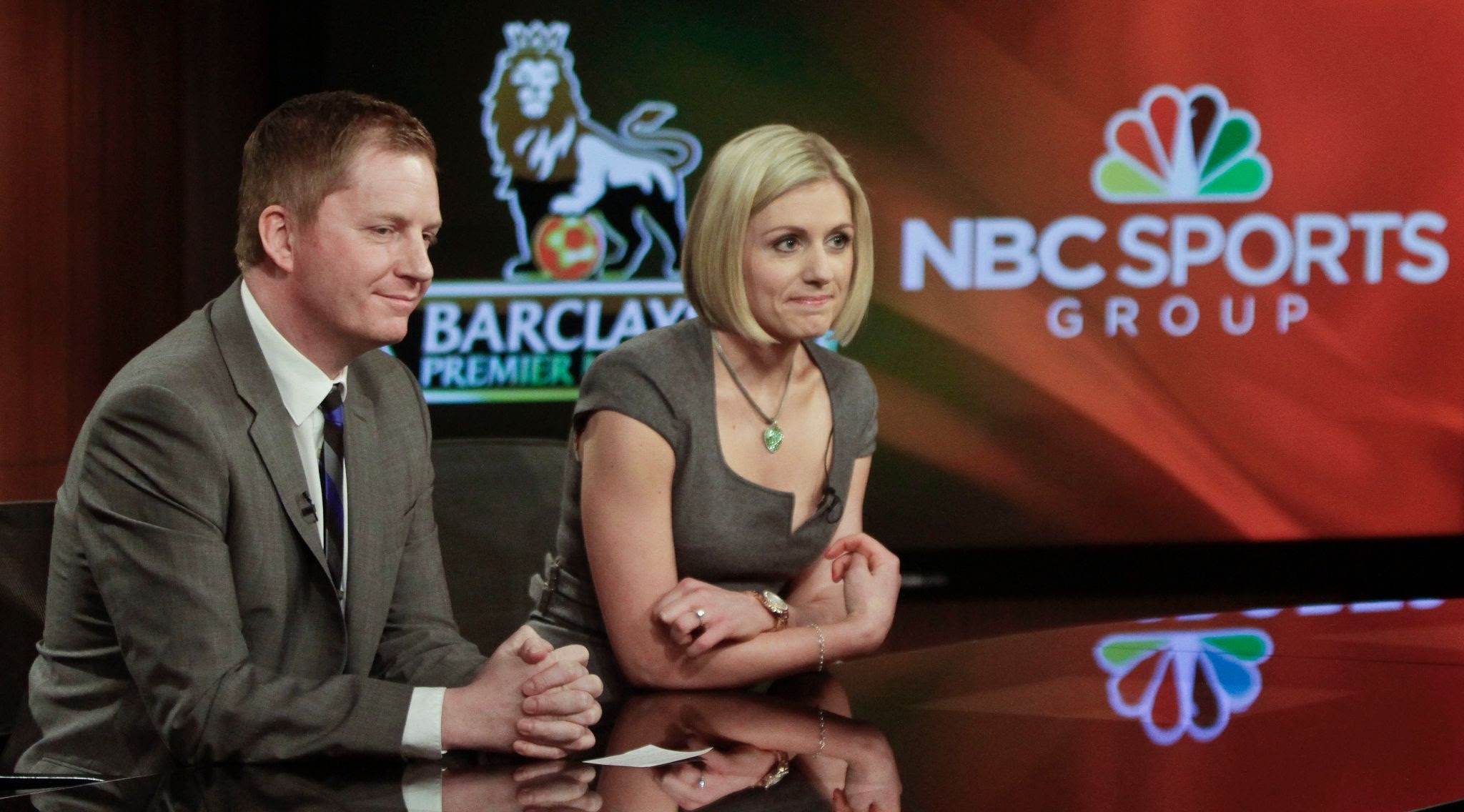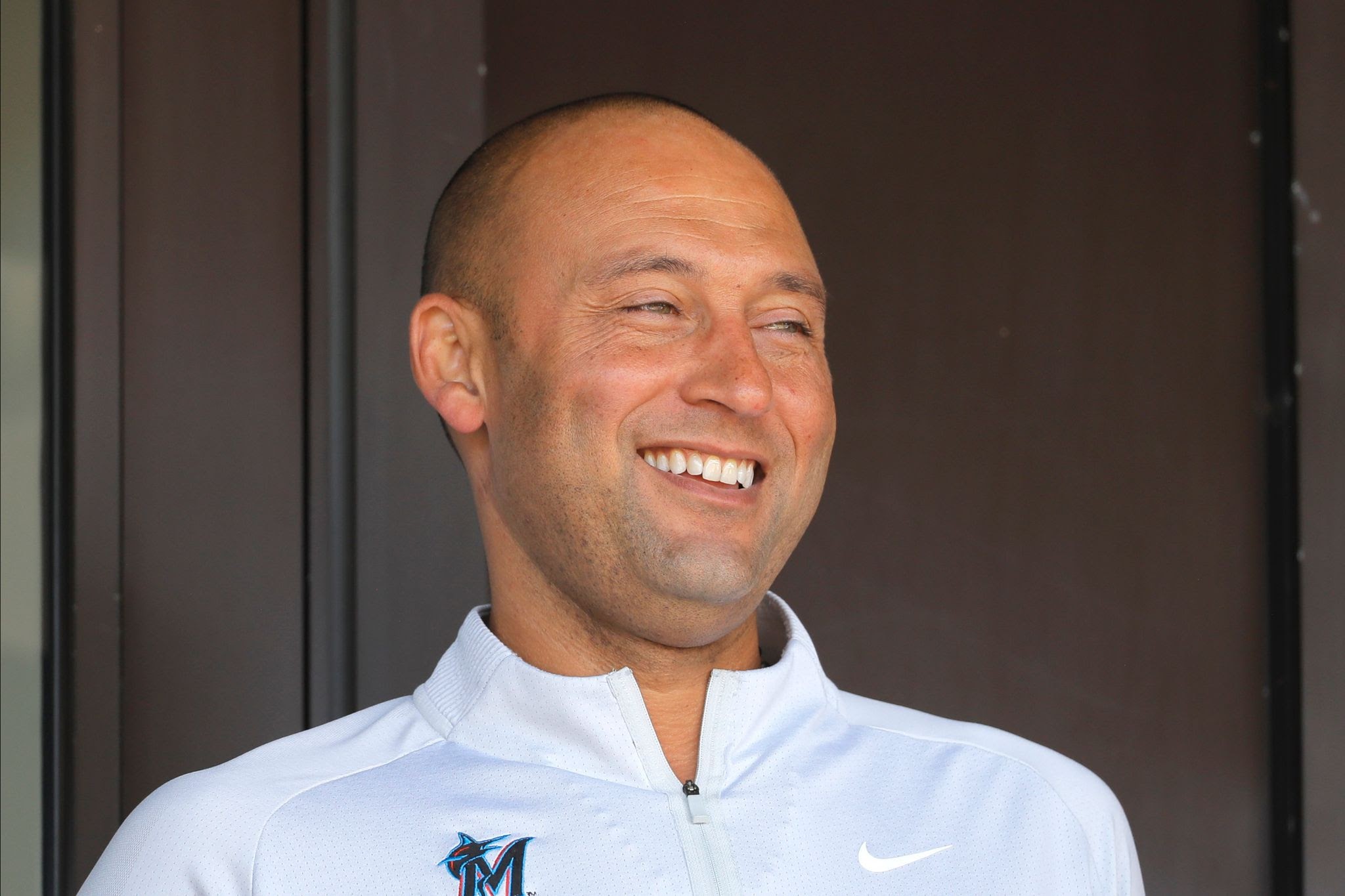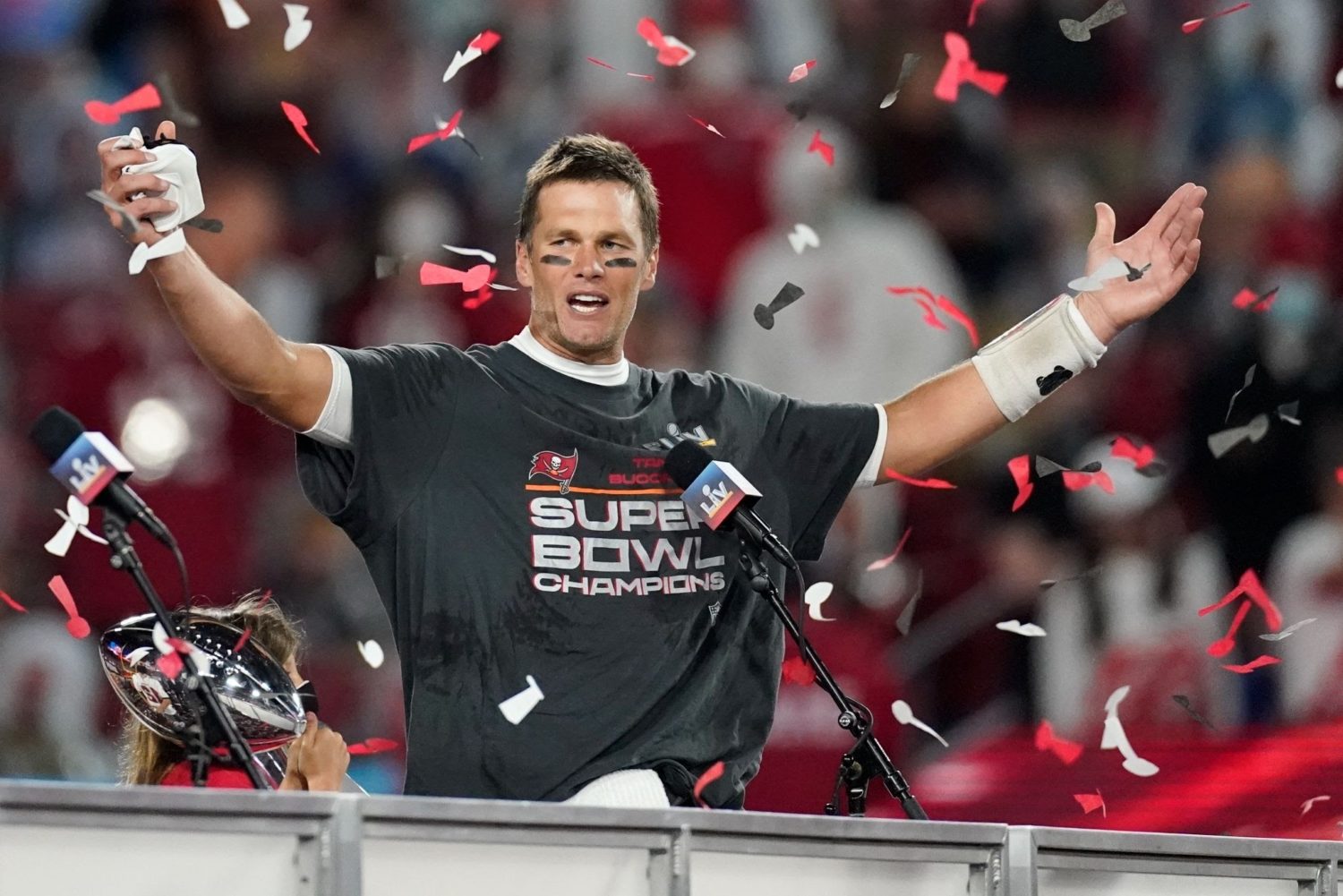When the Tampa Bay Buccaneers won the Super Bowl earlier this year, the local reporters who covered the team interviewed star quarterback Tom Brady and his giddy teammates.
On Zoom.
In fact, it was only recently — well after Brady’s improbable move to Tampa Bay produced a championship — that those who cover the Bucs were able to stand face-to-face with the legendary quarterback.
That’s because COVID-19 changed the way sports reporters cover sports. In-person interviews disappeared. One-on-one sitdowns became virtually nonexistent. Locker room scrums have been replaced by Zoom calls. And in-depth interviews? Forget it.
Unfortunately, those changes have severely hampered the way sports journalists do their jobs and, even more unfortunately, the changes might become permanent.
Before becoming Poynter’s senior media writer in 2019, I was a sportswriter and columnist for more than 30 years. So this topic is near and dear to me: Covering sports has changed dramatically since COVID-19.
Prior to March 2020, sports journalists did much of their best work in locker rooms. I cannot tell you how many interviews I did pulling wads of athletic tape off the bottom of my shoes while straddling sweaty equipment and damp towels to get a few insightful quotes from a winning pitcher, a losing goalie or the kicker who just won (or blew) the game in the final seconds.
But those scenes have been replaced by Zoom calls. And while reporters can still ask questions, it’s clearly not the same. Talking to athletes on Zoom along with a dozen other reporters is entirely different than talking to an athlete one-on-one and in person.
Philadelphia Inquirer sports columnist Mike Sielski wrote about this topic in his latest column, writing, “Now the country is opening up. COVID cases are dropping. Mask mandates are disappearing. So this is a request, almost a plea, for the major sports institutions in this country — the NFL, the NCAA, the NBA, MLB, the NHL, MLS, all of them — to restore as much independent-media access to their executives and coaches and athletes as possible. The closer that these leagues and franchises get to the way things once were, the better for everybody.”
So why is it so important for reporters to be face-to-face with athletes?
Rick Stroud, who has covered the Bucs and the NFL for more than three decades for the Tampa Bay Times, told me, “Like any business, reporting is about building relationships. Through those relationships, you build trust. And trust leads to information.”
Bottom line: You can’t do on Zoom what you can do in person.
Minneapolis Star Tribune sports columnist Chip Scoggins told me, “You feel detached without locker room access, like something is missing and you’re only getting part of the true picture with everything being done by Zoom. So much of what goes into covering a particular team as a conduit to fans — whether as a beat writer or columnist — is enhanced by personal interactions with the subjects you’re writing about. I miss digging out stories that happen organically from having casual one-on-one conversations with athletes or coaches in the locker room about their sport or their personal lives.”
While having access is great for sports journalists, many teams likely prefer limiting the amount of access that the media has because it helps them control the message.
“As much as teams and sports organizations may love the ability to control access and availability of their players, coaches and front office personnel, in the end I’m not sure it serves anyone, much less the readers,” Stroud said. “We cover sports, but there needs to be context to the stories we write. That’s almost impossible to cultivate with one or two questions on a Zoom call while the world is listening. Like all of us, the people we report on are much more guarded in their thoughts, feelings and information when a camera is in their face.
Stroud continued, “Worse yet, for the players who arrived in 2020, we’ve never formally met them.”
For example, Stroud, one of the most experienced football writers in the country, never had the chance to interview Brady in person until after the season. Instead of working the locker room for good stories, Stroud was stuck inside his Tampa home talking to players over the phone or his computer.
“When only one entity is controlling the message, it becomes extremely self-serving and one-sided,” Stroud said. “It’s also a little dehumanizing. Fans need to see these athletes as men and women, husbands and wives, brothers and sisters with families and obstacles and adversity that is relatable to all of us. That’s the connective fabric to the fans. It’s what increases interest and appetite. Good or bad, insight is what readers seek. Ultimately, that’s good for the teams and athletes we cover. But it begins with cultivating those relationships, in person, one-on-one.”
Ultimately, it might even be hurting the sports. Sielski wrote that, yes, wanting to go back into locker rooms is a “self-serving plea” and that he wants a return to the way things used to be. Echoing Stroud’s sentiments, Sielski wrote that the relationship between journalists and athletes is what produces good stories.
But Sielski also pointed out how interest in sports is down since COVID-19. There might be several reasons why, but it’s fair to ask if limited access is playing a role.
He wrote, “Saturation coverage of sports — the personalities, the statistics, the stories, the trends, the controversies — drives interest in sports. And as much as teams would love to keep independent media out of locker rooms and practice facilities, as much as owners and executives and coaches want to maintain control over their messaging and narratives, they themselves can’t deliver enough of that content to satiate the public’s appetite for it.”
There’s a chance that covering sports will never go back to what it once was. Teams might push to keep reporters out of locker rooms and use COVID-19 and health concerns as an excuse. Really, however, it likely will be because it makes their lives easier, and allows them to control the message. After all, with the way things are now, public relations departments for teams determine who speaks to the media as opposed to opening up their locker rooms to journalists.
And if teams are going to insist that interviews continue to be conducted over Zoom, many news outlets could decide it’s cheaper to not send journalists on the road to cover games. Instead, they could just let them cover games off TV from their homes, while moving to the dining room table to conduct postgame interviews.
Can sportswriters make it work? Probably. But a dining room table isn’t a locker room. And a locker room is where all the good stories are.
SPONSORED POST:
The Initiative in Reporting on Race and Criminal Justice at Columbia Lipman Center will provide grants from $30,000 to $45,000 and professional collaboration to four local news organizations for six-month reporting projects focusing on inequalities and abuses in the American criminal justice system. Apply now through June 20.
No charges in North Carolina shooting
Andrew Womble, the district attorney for North Carolina’s First Judicial District, held a press conference Tuesday to announce that Pasquotank County sheriff’s deputies were justified in fatally shooting a Black man, Andrew Brown Jr., saying Brown used his car as a “deadly weapon” to keep from being arrested.
Parts of bodycam videos were released from the April 21 incident when police fired 14 shots at Brown, who died at the scene. Police were trying to serve a drug-related warrant on Brown.
The press conference turned testy at times with the media pressing Womble on the details of the shooting. NBC News correspondent Catie Beck, on the scene in Elizabeth City, North Carolina, said on the air that it was a “very tense room” and that journalists asked some “very tough questions.”
CNN and MSNBC showed the press conference live. Fox News did not, although it did report the news to viewers. CNN and MSNBC had lengthy panel discussions right after the verdict.
For more on Tuesday’s developments, check out stories by The New York Times’ Richard Fausset, The Washington Post’s Lateshia Beachum and The Charlotte Observer’s Kate Murphy, Martha Quillin and Josh Shaffer.
An AP anniversary
The Associated Press is celebrating its 175th anniversary this month. The AP was formed in May 1846 when five New York city newspapers funded a pony express route through Alabama to carry news about the Mexican War to the northern part of the country. Today, it has bureaus in 250 locations in more than 95 countries. It produces 2,000 stories a day and more than a million photographs a year.
In a statement, AP president and CEO Gary Pruitt said, “For 175 years, the world has relied on The Associated Press to report the facts. From delivering the news via pony express to publishing our gold-standard U.S. election returns on the blockchain, AP continues to tell the world’s story in innovative ways nearly two centuries later. We are proud of our rich history and look forward to serving our customers better than ever for the next 175 years.”
NBC’s good decision

Rebecca Lowe (right) of NBC Sports (AP Photo/Bebeto Matthews, File)
The Athletic’s Richard Deitsch reported that Rebecca Lowe, the highly-skilled host of NBC’s Premier League coverage, will be back as NBC’s daytime anchor for the Olympics. This will be Lowe’s fourth time as daytime anchor for NBC’s Olympic coverage, having hosted coverage of the 2014 Sochi Games, the 2016 Rio de Janeiro Games and the 2018 PyeongChang Games. Mike Tirico will anchor the network’s prime-time coverage.
Postponed from 2020 because of COVID-19, the Tokyo Olympics are scheduled to run July 23 through Aug. 8.
The Captain

Derek Jeter (AP Photo/Julio Cortez)
ESPN hit it big last year with a 10-part documentary about Michael Jordan. Now it is turning its attention to another iconic sports figure. ESPN Films announced Tuesday that it will produce a six-part series on Yankees great Derek Jeter. Called “The Captain,” it will air sometime in 2022.
Randy Wilkins will direct. On Twitter, he called it a “dream come true.” Spike Lee and Mike Tollin will be among the executive producers. Tollin was executive producer on “The Last Dance” — the documentary about Jordan.
Jeter played 20 seasons in the majors — all at shortstop for the Yankees. He was elected to the Baseball Hall of Fame in his first year of eligibility in 2020. He is currently part-owner and CEO of the Miami Marlins.
A legend to retire
Dale Hansen, one of the most famous local sports broadcasters in TV and a legendary figure in Dallas-Fort Worth and all of Texas, is retiring after more than 38 years. He will step away in September.
He told his station, WFAA, “There’s an old proverb that says all good things must come to an end, and it’s true, all good things do. I’ve been waiting 25 years for the Cowboys to win another Super Bowl and I can’t wait anymore.”
Hansen started at WFAA in March 1983 and his “Dale Hansen’s Sports Special” has been a must-see Sunday night show for sports fans in the Dallas area. Hansen also is known for his strong “Unplugged” commentaries — often taking liberal views on topics like kneeling for the national anthem and gun control.
Check out the WFAA story for more details on Hansen’s notable career.
Forbes employees look to unionize
Journalists at Forbes are looking to unionize to gain fair pay and job security. About 105 editorial employees (reporters, editors, designers, photo and video journalists and social media editors) have signed union cards with the NewsGuild of New York.
In a statement, Matt Kang, a video producer at Forbes, said, “This is largely about strengthening a greater sense of balance within the newsroom. The more balanced we are as a unit, the stronger we can perform in an increasingly competitive and crowded media landscape and ensure our successful track record.”
In that same statement, senior media editor Dawn Chmielewski said, “We’re organizing to promote greater diversity in our newsroom, to gain more of a voice in editorial decisions, and advocate for a more supportive work environment where there are clear pathways for promotion.”
A spokesperson for Forbes told CNN’s Kerry Flynn, “Comprehensive salary reviews are an ongoing process at Forbes, and compensation ranges ensure that there are no pay inequities.”
Hot type
- Writing for The Ringer, Aric Jenkins with “The WarnerMedia-Discovery Deal Changes Everything for Streaming.”
- The 19th*’s Barbara Rodriguez with “Only some parents can use campaign funds for child care when running for office. Here’s why.”
- Writing for Esquire, Matt Miller with “Joe Rogan, Whose Podcast Reaches Millions, Is Afraid Woke Culture Will Silence Straight White Men.”
Have feedback or a tip? Email Poynter senior media writer Tom Jones at tjones@poynter.org.
More resources for journalists
- Subscribe to Alma Matters — Poynter’s new newsletter for college journalism educators
- Professor’s Press Pass (Poynter) — Get access to a growing library of case studies
- Understanding Title IX (Webinar) — Start anytime
- Poynter’s High School Journalism Program (online and available to students nationwide) — Application deadline: May 24.
The Poynter Report is our daily media newsletter. To have it delivered to your inbox Monday-Friday, sign up here.







